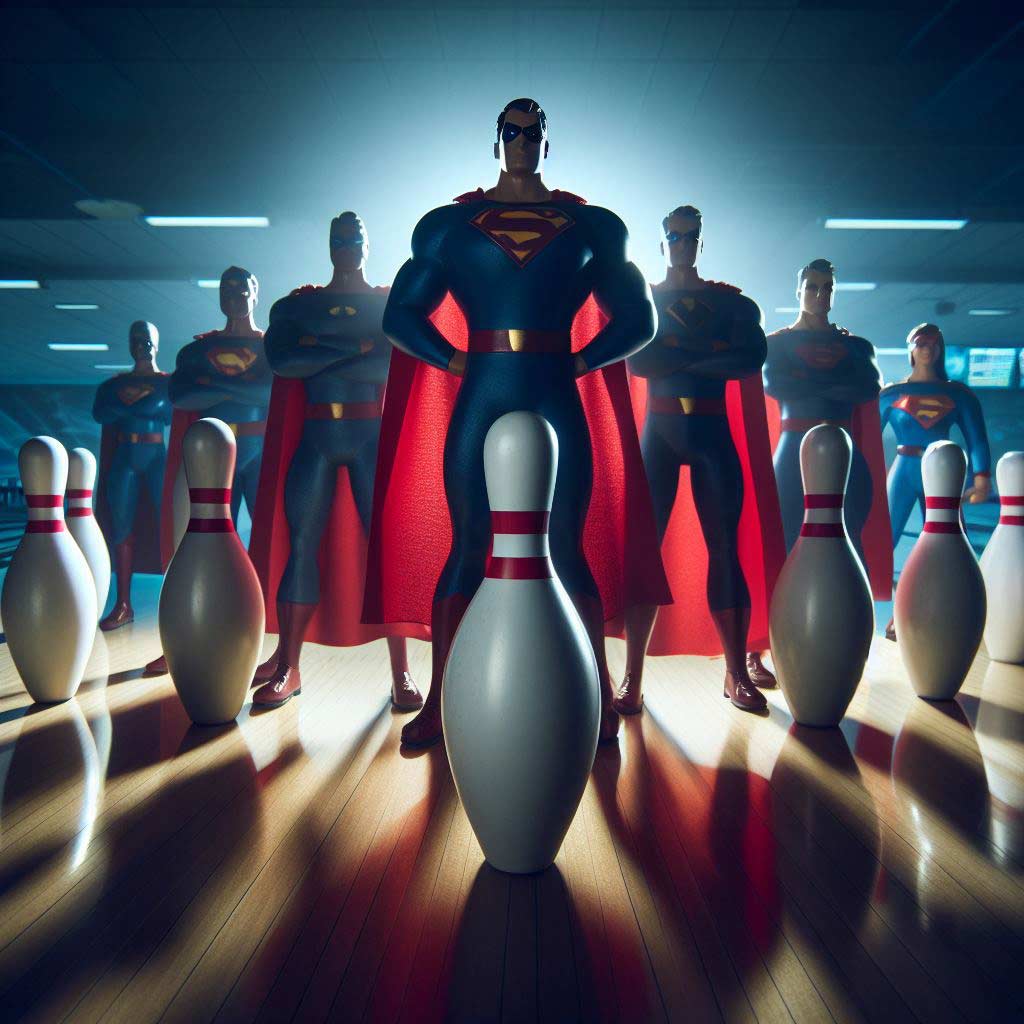Are you looking to take your love for bowling to the next level? Joining or creating your own bowling team can make the game even more fun, competitive, and rewarding.
Whether your goal is to socialize with friends, compete in local leagues, or even work towards tournament glory, having a cohesive and skilled bowling team is key.
In this ultimate guide, we’ll walk through all the steps to build a successful bowling team from the ground up. We’ll cover recruiting players, setting goals, choosing a team identity, developing skills, fostering team chemistry, preparing for competitions, and analyzing performance. By the end, you’ll have a comprehensive roadmap to unite your passion for bowling with the camaraderie and drive of a dedicated team.
Building Your Team
Recruiting Players
The first step in creating a bowling team is finding the right players to join your ranks. Reach out to friends, post on local bowling alley boards or online groups, and attend league nights to scout potential talent.
As you evaluate prospects, assess their skill levels through score histories or by watching them bowl. Aim for a balance of experienced players and those with room to improve.
When building your roster, consider the optimal team size (usually 4-6 core members with substitutes) and strive for a mix of playing abilities that complement each other’s strengths and weaknesses. Having too many top-tier players can lead to conflicts, while too many beginners may struggle to compete.
Setting Team Goals
Before cementing your team, discuss and align on goals. Is the focus primarily on fun and socializing? Do you want to join a relaxed local league?
Or are you seeking to climb the competitive ranks with aspirations of playing in tournaments? Clearly defined goals will guide your team’s path and help manage expectations.
If aiming for a more competitive environment, research and agree upon target leagues or tournaments to give your team a driving motivation. For more casual social teams, you may still want to participate in leagues or events for the enjoyment of team competition.
Choosing a Team Name/Identity
What’s a team without a cool name and identity? Brainstorm creative but memorable team name ideas that capture your group’s personality and goals. If pursuing a fun, pun-filled direction like “Bowling Belles” or “Gutter Gorillas“, coordinate matching team shirts or insignia to fully lean into the theme.
For a more competitive identity, consider abstract names like “Strikers” or “Cyclones” that sound intense but leave room for intimidating logo designs or intense team colors. Establishing a strong team brand gets everyone excited while also helping you stand out against opponents.
Developing Team Skills
Practice Schedules and Drills
Simply being on a bowling team won’t magically improve your skills. Commit to regular team practice schedules at least once per week, focusing on skills like:
- Proper swing plane and release
- Aim, timing, and consistent stroke
- Reading oil patterns and making lane adjustments
- Spare shooting accuracy
- Mental focus and visualization techniques
Come prepared with specific skill-building drills like working on specific spare shots, bowling cross-lane to practice curving the ball, or recording video to analyze each other’s form. Dedication to purposeful practice will quickly elevate everyone’s abilities.
Equipment Considerations
While not as crucial as practice, ensuring your team has well-fitted quality equipment can also help boost performance. Make sure each team member has:
- A bowling ball properly fitted to their hand size/span and drilled for their rotation
- Bowling shoes with ample slide and traction
- Accessories like wrist guards to prevent injury
As skill levels increase, team members may want to invest in specialty balls for different lane conditions or have their equipment periodically adjusted or maintained by a pro shop.
Physical Conditioning
Bowling is deceptively athletic and requires overall strength, flexibility, and stamina – especially during prolonged tournament or league play. Encourage your team to make physical conditioning a priority through:
- Dynamic warm-up and stretching routines focused on legs, back, and shoulders
- Strength training for muscles used in the bowling swing/release
- Cardio exercise to increase endurance
- Injury prevention with conditioning for stability and balance
A focus on fitness will help the whole team avoid injuries, reduce fatigue during competition, and maintain energy and consistency when it matters most.
Building Team Chemistry
Even a collection of talented bowlers won’t reach their full potential without fostering strong team chemistry and dynamics. Clearly define everyone’s roles and expectations upfront – who will be team captain, ensure payments are collected, coordinate practice schedules, etc.?
Go beyond just the logistics and intentionally schedule team-building activities to bond over your shared passion for bowling. Grab team meals before/after practice, participate in bowling-themed trivia nights, or simply hang out and develop those connections off the lanes.
Encourage an environment of open communication where teammates can share advice, give feedback, and call out both strengths and areas for improvement in a constructive manner. If tensions or conflicts do arise, have an agreed-upon process for resolving them quickly and redirecting that energy into more positive team building.
Preparing for Competitions
Scouting Other Teams
As your team’s skills progress, you’ll likely want to start competing more seriously – which calls for an extra level of preparation. Research and scout other local teams or opponents by:
- Attending their competitions to assess strengths and weaknesses
- Analyzing their stats, high scores, and common spares missed
- Identifying key players to target your best bowlers against
Compile all of this intel into game plans that detail specific offensive and defensive strategies tailored to each opponent. For example, if a rival team has several southpaw bowlers, adjust your line-up and positioning accordingly to gain a mental edge.
Mental Preparation Techniques
While physical practice and game planning are vital, elite teams know that mental toughness is also a key part of competitive success. Teach your teammates focus techniques like:
- Controlled breathing before each shot
- Positive self-talk and visualization
- Avoiding negative thoughts about previous poor shots
- Staying even-keeled through a poker face and body language
Leading up to major competitions, simulate the pressure of tournament conditions during team practices. Have teammates take turns being the “anchor” bowler with the game on the line to work on performing under stress.
League/Tournament Rules and Etiquette
Finally, ensure your whole team is well-versed in standard bowling rules and etiquette to avoid penalties or disruptions during competition:
- No stepping over/straddling the foul line
- Waiting for your turn before entering the approach area
- Keeping your bowling ball’s path clear of other bowlers
- Limiting distractions and being courteous to other lanes
Research any specific league or tournament rules regarding delays of game, foul definitions, re-rack procedures, and other logistics. Being knowledgeable and composed during competition lets you keep your focus entirely on performance.
Post-Competition Analysis
Reviewing Scores/Stats
After each competition, take the time to thoroughly review and analyze your team’s performance while everything is still fresh. Break down overall scores and pin counts, but dig deeper into more granular stats like:
- Strike percentages and strike streaks
- Percentage of missed spares by pin leaves
- Performance breakdowns by bowler position or game segment
Identify Strengths/Weaknesses
Use that statistical analysis to then identify both strengths and weaknesses in skills and strategies. Where does your team consistently excel – opening games strong, clutch spare shooting, capitalizing on opponent’s opens? And which areas need more improvement – endurance over long formats, adjusting to challenging oil patterns, mental toughness?
Giving Feedback
With strengths and weaknesses in mind, take the time to give feedback – both to the team overall and individually. Find ways to constructively praise what went well while framing criticism in a motivating way focused on building skills and supportive coaching. Overly negative feedback will only breed resentment.
Creating Plans for Improvement
Finally, every post-competition review should culminate in specific, actionable plans for getting better before the next event. Use those revealed weaknesses to dictate updated practice plans, adjustments to strategies, or areas of renewed conditioning focus. Consistently iterating and leveling up will have your bowling team progressing in no time!
Conclusion
Building and growing a truly successful bowling team takes work – but the rewards of bonding over a shared passion, constantly refining your skills, and savoring those competitive triumphs make every ounce of effort worthwhile.
We’ve covered all the key foundational elements, from initially recruiting and aligning your players to fostering the right team culture and chemistry.
With dedicated practice, strategic preparation, keen analysis, and a resilient competitive mentality, you’ll be well on your way to unlocking new heights of bowling greatness.
So embrace the thrill of the bowling team experience! Whether aiming for casual camaraderie or striving for tournament glory, strategically applying these tips ensures your team will be poised to roll strikes for seasons to come.





